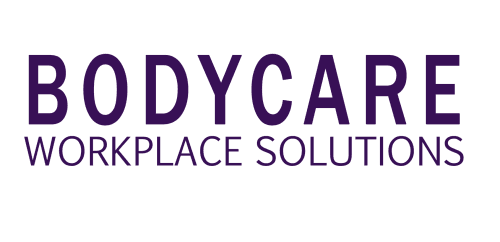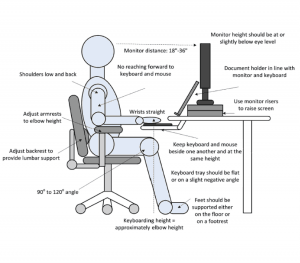Office Ergonomics: Is it really worth the investment?

Ergonomics is the scientific application of human data when designing the working environment. Put simply, you want to design a workplace that works with the natural law of the human body, in order to increase the comfort, safety and efficiency of your workforce. But is it really worth the investment? What kind of benefits can you expect from having an ergonomic workplace?
The benefits of ergonomics reach far and wide. It will keep your workforce healthy and save your company money. Proper workplace ergonomics have been proven to reduce worker compensation claims by up to 90%, improve productivity by 10 to 15% and even positively affect product quality. Can you afford a workplace ergonomic assessment? The better question is, can you afford not to?
Ergonomic Assessments in the workplace
What are ergonomic assessments? Their primary purpose is to ensure that your workstations are ergonomically designed to minimise the risk of injury and maximise productivity. A secondary application is to support the return to work of an injured worker by ensuring that their workstation is designed to minimise any discomfort as they recover from their injury and prevent re aggravation. Finally, they are also vital for workers who work from home, to ensure their home work environment is safe and ergonomically designed.
When considering an ergonomic assessment, it’s important to be aware of the biggest risk-factors facing your employees, and some of the common ergonomic mistakes that businesses make. The primary risk-factors are:
- High task repetition – when a worker is completing a task with a cycle time of 30 seconds or less.
- Forceful exertions – when a worker is constantly completing a task that requires a high amount of muscle effort.
- Repetitive/Sustained awkward postures – when a worker is forced to place excessive pressure on joints, muscles and tendons for an extended period of time.
These risk factors are often exacerbated by some of the five most common ergonomic mistakes in an office environment:
- Improper use of seating – sitting on the edge of your seat or hunched over, instead of resting your shoulder blades firmly against the back of the chair.
- Phone cradle – cradling a phone between your head and shoulder while you use your hands to work a computer.
- Lack of wrist rests – keyboards and mice should be equipped with a wrist rest to reduce repetitive strain stress.
- The 90 degree rule – knees should be at a 90 degree angle to the floor as you sit at your desk. Likewise, elbows should also have the same angle.
- Monitor height – monitors should be at exactly eye-level when sitting up straight in a chair.
Simple Ergonomic Solutions
Now that you know a little bit about ergonomics, the question is where do you start? The first step is to arrange for an ergonomist or occupational health professional, such as a physiotherapist, to conduct ergonomic assessments within your workplace. These people are experienced in assessing and identifying problems and have the necessary skills to suggest solutions for any ergonomic issues they encounter. With the health professional’s guidance, you’ll be able to decide if you simply need an ergonomics workshop for your staff to increase awareness, one-on-one standard assessments of every employee to ensure correct ergonomic setup, or a full comprehensive assessment to determine equipment and higher level controls that may be required for an injured employee.
Once your ergonomic issues have been identified, you will then be able to decide on the best form of control to correct them: administrative controls and engineering controls. Administrative controls include things like work practice controls, job rotation, and counteractive stretch breaks. Engineering controls eliminate or reduce awkward postures with ergonomic modifications that seek to maintain joint range of motion. A solution to the ‘phone cradle’ problem that we mentioned earlier, for example, could be the engineering control of equipping your staff with headsets. A solution to a high-task repetition issue could be the administrative control of cycling employees between repetitive tasks.
Ergonomic Benefits
There is an interesting trend in the world of ergonomics these days. There has been a move away from simply reducing musculoskeletal injuries, towards the diverse business benefits that come from ergonomic change. As well as reductions in worker compensation claims and increases in productivity, good ergonomics keeps your workers happy and healthy. They also improve employee engagement. People notice when you invest in them and taking steps to improve health and safety and caring about your employees’ working conditions will improve the culture.
The best way to implement an ergonomics program will vary depending on your business’ specific needs. Bodycare and their team of injury prevention specialists have extensive experience with ergonomics in both operational and office based working environments. The Bodycare team take a risk based approach to ergonomics and look to implement programs that are tailor-made to help you keep your company healthy and injury free, whilst providing you with a positive return on investment.



